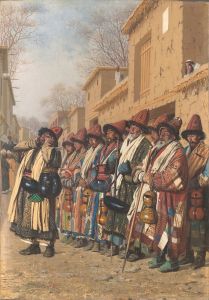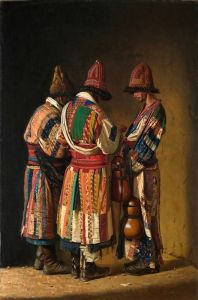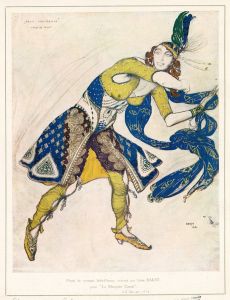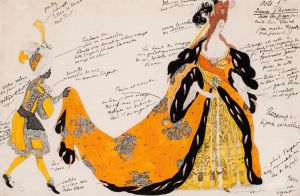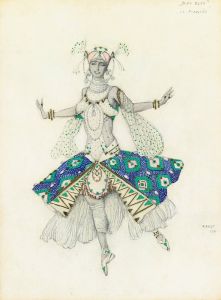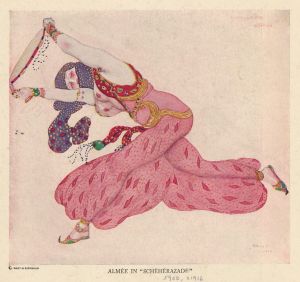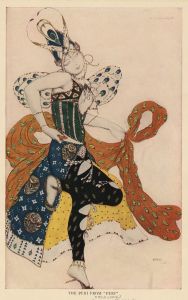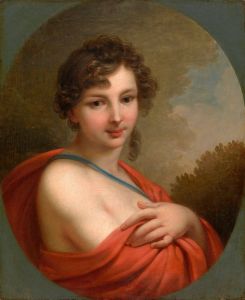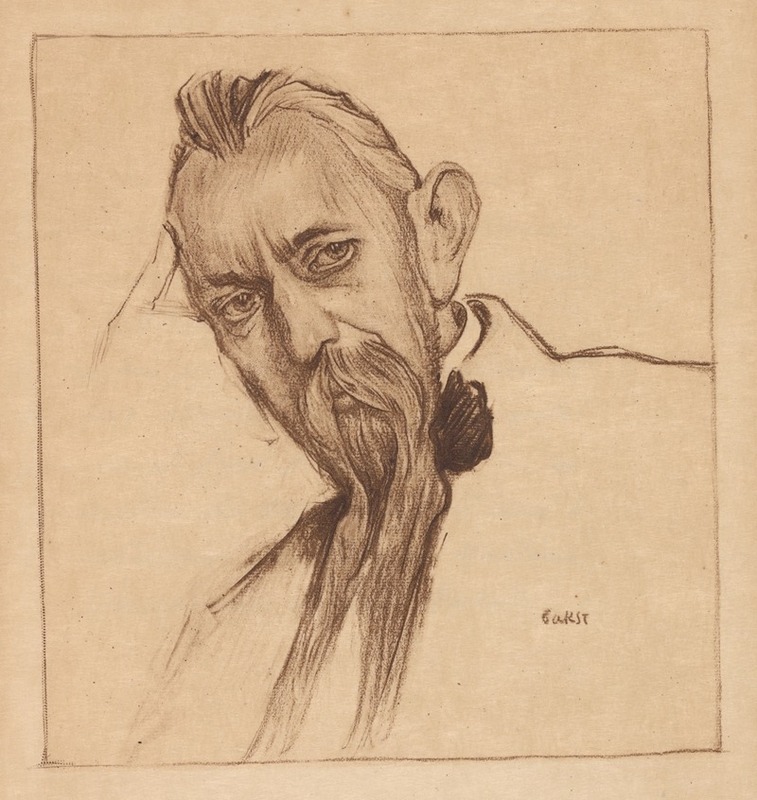
Le sacre du printemps 2
A hand-painted replica of Léon Bakst’s masterpiece Le sacre du printemps 2, meticulously crafted by professional artists to capture the true essence of the original. Each piece is created with museum-quality canvas and rare mineral pigments, carefully painted by experienced artists with delicate brushstrokes and rich, layered colors to perfectly recreate the texture of the original artwork. Unlike machine-printed reproductions, this hand-painted version brings the painting to life, infused with the artist’s emotions and skill in every stroke. Whether for personal collection or home decoration, it instantly elevates the artistic atmosphere of any space.
Léon Bakst, a renowned Russian painter and scene and costume designer, is celebrated for his influential work in the early 20th century, particularly with the Ballets Russes. His contributions to the world of art and theater are marked by his vibrant use of color, intricate designs, and the ability to evoke emotion and drama through his visual compositions. One of his notable works is "Le Sacre du printemps 2," which, like many of his creations, reflects his innovative approach to design and his deep understanding of theatrical aesthetics.
Bakst was born in Grodno, which is now in Belarus, in 1866. He studied at the St. Petersburg Academy of Arts and later moved to Paris, where he became involved with the artistic circles that would shape his career. His association with Sergei Diaghilev and the Ballets Russes was particularly significant, as it allowed him to explore and expand the possibilities of stage design. Bakst's work with the Ballets Russes included designs for several groundbreaking productions, such as "The Firebird," "Scheherazade," and "Narcisse."
"Le Sacre du printemps," also known as "The Rite of Spring," is a ballet and orchestral concert work by the Russian composer Igor Stravinsky. It premiered in Paris in 1913 and is famous for its avant-garde music and innovative choreography by Vaslav Nijinsky. The ballet's themes revolve around pagan rituals and the celebration of spring, culminating in a sacrificial dance. Although Bakst did not design the original 1913 production of "Le Sacre du printemps," his involvement with the Ballets Russes and his style suggest that he may have created works inspired by or related to the themes of the ballet.
"Le Sacre du printemps 2" by Léon Bakst is not widely documented in art historical records, and specific details about this particular work are scarce. It is possible that this piece was part of a series or a conceptual exploration by Bakst, reflecting his interest in the themes of primitivism and the natural world, which were prevalent in early 20th-century art and culture. Bakst's designs often featured bold colors, dynamic compositions, and a synthesis of various cultural motifs, which could have been applied to a work inspired by "Le Sacre du printemps."
Bakst's legacy in the world of art and theater is profound. His ability to blend visual art with performance created a new standard for stage design, influencing generations of artists and designers. His work continues to be celebrated for its creativity, vibrancy, and the way it captures the spirit of the early 20th century's artistic innovations. While specific information about "Le Sacre du printemps 2" remains limited, Bakst's overall contribution to the arts is well-documented and appreciated by scholars and enthusiasts alike.
In summary, while detailed information about "Le Sacre du printemps 2" by Léon Bakst is not readily available, his broader body of work and influence on the Ballets Russes and stage design are well-recognized. His artistic vision and innovative approach continue to inspire and captivate audiences, ensuring his place in the annals of art history.






